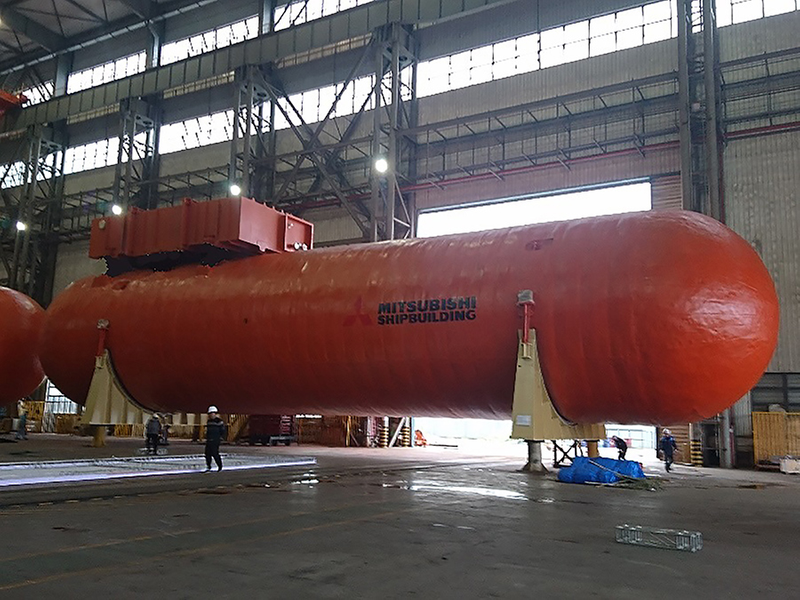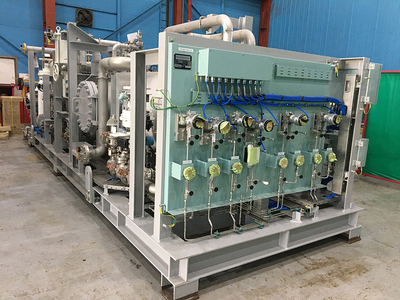Mitsubishi Delivered First LNG FGSS Fueled PCC
Mitsubishi Shipbuilding Co., Ltd. has delivered the first LNG (Liquefied Natural Gas) fuel supply system "FGSS (Fuel Gas Supply System)" for dual fuel marine engines.
This system will be installed onboard the first LNG fueled pure car carrier (PCC) built in Japan, which is currently under construction at Shin Kurushima Toyohashi Shipbuilding Co., Ltd.
The FGSS is an LNG fuel gas supply system developed by Mitsubishi Shipbuilding utilizing LNG and vaporized gas handling technology developed through its long experience on the construction of LNG carriers, and also has been verified for marine use backed by accumulating experience in marine engine test facilities at engine manufacturers.
The FGSS consists of LNG fuel tanks, LNG fuel gas supply units and control unit etc., and is delivered in modules, which is expected to contribute to the optimum design of the cargo space and help the shipyard to shorten the installation period, as well as support safe operation by customizing the control system, etc. of FGSS to meet the operational needs of the ship owner.
Mitsubishi Shipbuilding has also provided the shipbuilding yard with the engineering service and technical support relating to the gas handling of the ship.
The supply of FGSS is expected to greatly contribute to the environmental performance of the ship and not only to meet the sulfur oxide (SOx) emission regulations coming effect globally in 2020, but also to improve the energy efficiency (CO2 emissions per unit of transportation) of the ship by approximately 40%, which is far exceeding the International Maritime Organization (IMO) EEDI Phase 3 requirements(Note) that will become effective in 2025. The ship is additionally expected to reduce SOx by approximately 99% and nitrogen oxides (NOx) by approximately 86% compared with the conventional heavy oil-fired engines. Further, the ship has also been adopted by Japan's Ministry of Environment and Ministry of Land, Infrastructure, Transport and Tourism as the model project to reduce CO2 emissions by using alternative fuel.
To convert conventional oil-fired ship into LNG fuel ship is one of solutions to conform to the emission regulations. By providing FGSS and the related engineering services and technical support for newbuildings and conversions, Mitsubishi Shipbuilding is going to contribute to the economy for the ship owners and operators, increase the added value of the ships and reduce the environmental load that is increasing on a global scale.
Note: EEDI Phase 3 requirements:
Regulations on the energy efficiency of ships based on the 2013 revision of the International Convention on the Prevention of Ship Pollution 1997 Protocol (Appendix VI to the MARPOL Convention). EEDI (Energy Efficiency Design Index) is the number of grams of carbon dioxide (CO2) required to carry 1 ton of cargo for 1 mile, and the reduction rate from the baseline (baseline) will be gradually enhanced. Car carriers are required to implement reductions of 5% by 2015 (Phase 1), 15% by 2020 (Phase 2), and 30% by 2025 (Phase 3).
 LNG Fuel Tank (Photo: MHI)
LNG Fuel Tank (Photo: MHI)
















